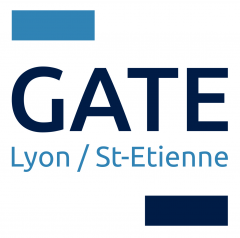Dance to the market beat: emergent rhythm in algorithmic trading patterns
Laurent Pataillot
-
The five-step tango (plus or minus two): emergent rhythm and information in algorithmic trading patterns
As financial markets have undergone a complete shift to a fully electronic format, their microstructure has transformed into an algorithmic paradigm, where the pursuit of speed is paramount for gaining a competitive edge in information acquisition. At ultra-short time scales, market activity can be decomposed into several layers of events happening on interacting exchanges, each contributing to the jumps from state to state of a global order book. We model the aggregated result as a superposition of Hawkes processes for 500 stocks traded on 14 US exchanges over a period of four years and find that, regardless of the asset, the market as a whole always diffuses information in clusters of five events on average, despite the steady increase of exogenous input over the years. We relate these findings to universal rhythmic rules and cognitive theories such as ’Miller’s law’ and the El Farol bar problem. Finally, we discuss our contribution to the literature claiming that markets operate at a near-critical state, as do all complex systems.
-
Cake or potion? Setting bounds for market reflexivity
This study aims to explain past observations of market behavior by establishing lower and upper bounds for market reflexivity, typically quantified by the branching ratio of one or several Hawkes processes in the specific context of algorithmic and high-frequency trading. The lower bound is derived from the speed limit theorem, a well-known result in Stochastic Thermodynamics, which introduces a trade-off between speed and energy consumption. The upper bound, more similar to a ’downwards pressure’, results from a particular interpretation of Shannon’s noisy channel coding theorem, taking an information-theoretical view of financial markets as communication channels. Both bounds are linked by recent theoretical advances on the thermodynamic cost of communication. We show that this bounded region corresponds to an optimal cost-benefit regime to diffuse information and argue that increasing speed also increases energy consumption but does not improve the informational efficiency of markets.
-
The Heat is On: Impact of Behavioral Temperature in an Artificial Equity Market
